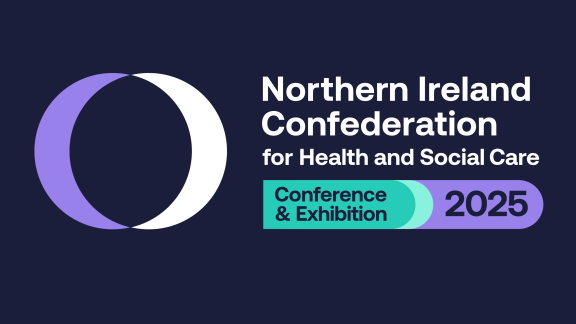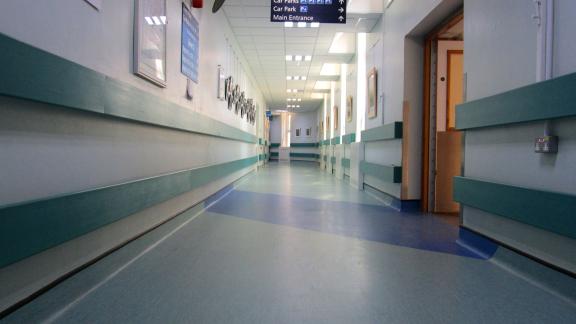Supporting system change: Views and policy priorities of NICON Associate Members
Key points
In May 2025, NICON held an engagement session for our Associate Members to help identify shared policy priorities and provide them with an opportunity to feed back on our work.
We identified many areas of commonality on policy. Our Associate Members are acutely aware of the challenges facing the HSC system at present - they discussed current barriers to progress, while also highlighting opportunities for improvement.
For example, some members felt that the NI system is not yet fully open to embracing new technology and medical innovations. They also wished to see a greater focus on overall system value and on partnership working with the third sector and industry.

Overview
In May 2025, NICON held its first Associate Member engagement session of 2025-26. The session was designed to identify areas of commonality between NICON’s policy priorities and those of its Associate members; to explore how we can continue to support members; and to inform and reinforce our wider work.
What is NICON’s Associate Membership Scheme? Our Associate Membership Scheme is open to organisations that work in the health and social care sphere in Northern Ireland in some capacity. It is designed to facilitate greater collaboration between the HSC system and the wider health and social care community here. We currently have over 40 Associate Members, including not for profits, Royal Colleges, and commercial organisations.
Summary of discussions
1. General context
- Members are acutely aware that the HSC system in NI is subject to major pressures and financial constraints. They felt developing a focus on solutions, innovation, and digitisation within the system was a key part of overcoming these challenges.
- The ‘three shifts’ narrative from NHS policy in England has begun to permeate in the NI context, although it was mainly referenced by members operating on a UK-wide basis.
- There were repeated references to a lack of connected thinking within health policy, with siloed working still all too commonplace. Members stressed the need for collective alignment on the drivers and practical outworkings of change.
- Members also emphasised the need for greater partnership working within the health and social care sphere. They identified opportunities across NICON’s Associate Member scheme, as well as discussing the potential for deeper connection between the third sector and industry on joint projects and health innovation.
2. Challenges, barriers, and opportunities for innovation and improvement
- Several members felt that NI is, in general, not yet fully open to embracing new technology and medical innovations. Despite the successful roll-out of a single digital care record (encompass), they emphasised that more remains to be done with regards to digitisation. This view was particularly prevalent amongst the commercial colleagues present.
- By way of example, members discussed several innovations developed by indigenous NI companies (in the health and life sciences sector) that have been adopted outside of NI, at the national or international level, but are not being embraced locally to the same extent.
- Several members referenced successful pilots that had not been commissioned more widely, despite achieving proven outcomes, often due to a lack of funding and/or excessively bureaucratic processes. Members agreed that this represented a missed opportunity to implement impactful and innovative programmes that offer good value for money.
- Additionally, members discussed a range of initiatives that have only been partially rolled out in NI. One member commented on the need for a greater focus on overall system value.
- Some members made reference to what they deemed a lack of parity with rest of the UK in certain areas related to health and social care, including training for medical professionals and the ‘standard’ health checks offered to patients (e.g. some testing that happen automatically elsewhere in the UK is not currently offered in NI, negatively impacting prevention efforts).
- Some members perceived a system-wide failure to harness the full potential of NI’s strong community and voluntary sector within health and social care, including overlooking ‘simple innovations’ that could prove beneficial if adopted more widely.
- Similarly, one member commented that NI currently lacks a central ‘hub’ through which patients can easily find existing services - this means individuals may not always be aware of the full range of services on offer to them. Ideally, such a hub would cover all support and services available (i.e. it would extend beyond the HSC system to partner organisations who also offer valuable services).
- The pressing need for clearer communication with patients, particularly those on waiting lists, was also raised by members, tying into HSC ‘waiting well’ initiatives.
- Other specific issues cited included duplication of processes; a perceived lack of appropriate support for people with complex needs on admission to hospital; the lack of data recorded from home care; and the current crisis in NHS and HSC dentistry.
3. Views on NICON’s role within the system
- Members recognised that NICON has a role to play in ‘cross-pollination’ – i.e. information sharing and engagement across the system.
- Members also recognised NICON’s role in facilitating collaboration – including bringing everyone together to be creative thinkers and problem solvers collectively.
- Members were keen to have a way to showcase their work; forge connections with other members; and demonstrate how they can support the health trusts through NICON.
- It was suggested that NICON could take on an ‘amplifying’ role, generating conversation and raising the profile of specific issues currently impacting Associate Members. NICON's annual conference was seen as a key vehicle for exploration of these issues.
- Members spoke positively about NICON’s overall role in sharing information and organising the annual NICON conference. Several members suggested session ideas for the upcoming conference, which will take place in October. In-person networking and creativity was seen as a highlight of previous conferences.
Proposed next steps
- The upcoming NICON 2025 conference and exhibition on 15 and 16 October will look at many of the issues raised during this engagement session in greater depth. Many Associate Members will also be exhibiting at the conference. Registration for the event will open soon.
- Going forwards, NICON will aim to have regular meetings with Associate Members, either on a quarterly or twice yearly basis. These will have a set agenda and will, where appropriate, include presentations from NICON members and other stakeholders.
- NICON will consider how we can help to connect our Associate Members with our HSC Members in a more holistic and focused way.
- Associate Members will be encouraged to contribute more regularly to the redesigned NICON newsletter, which is sent out each week.
- Further opportunities will be offered to Associate Members to feed into our work, including via future member surveys.



